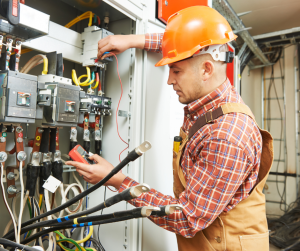Enhance Your Home with an Automatic Bioethanol Fireplace for Effortless Comfort
Understanding Automatic Bioethanol Fireplaces
What is an Automatic Bioethanol Fireplace?
An automatic bioethanol fireplace is a modern heating solution that utilizes bioethanol as its fuel source. Unlike traditional fireplaces that burn wood or gas, bioethanol fireplaces create a real flame while being environmentally friendly. These units typically have an automated ignition and flame control, allowing users to adjust settings via remote controls or smart home devices. This not only enhances safety but also provides convenience in operation, making such fireplaces increasingly popular in contemporary homes.
How Does It Work?
Automatic bioethanol fireplaces operate through a few primary components. The core of the system includes a bioethanol burner, which is designed with an electronic ignition system that allows for easy start-up. When the fireplace is activated, bioethanol is pumped from its reservoir to the burner, where it is ignited electronically.
Most automatic models include smart technology, which can enable interactivity with mobile apps and smart home systems like Amazon Alexa or Google Home. This integration creates a seamless experience, allowing homeowners to adjust flame height, turn the unit on and off, and even set schedules for operation directly from their smartphones.
Key Benefits of Automatic Models
- Convenience: The remote control and smart features enable users to operate their fireplaces easily without manual intervention.
- Safety: Many automatic models include safety features like flame sensors, which can automatically shut off the fireplace in case of any irregularities.
- Environmentally Friendly: Bioethanol is a renewable resource, producing minimal emissions compared to fossil fuels and wood.
- Aesthetically Pleasing: Modern designs and customizable options allow these fireplaces to fit seamlessly into any interior decor.
- No Chimney Needed: As they don’t produce smoke, there’s no requirement for chimney installation, making them perfect for apartments and homes without traditional fireplaces.
Choosing the Right Automatic Bioethanol Fireplace
Factors to Consider Before Purchase
When selecting an automatic bioethanol fireplace, there are several factors to keep in mind:
- Size and Space: Determine the area where you intend to install the fireplace. The size of the unit should complement the space without overwhelming it.
- Design and Aesthetics: Consider the overall look of the fireplace and how it aligns with your home’s decor. Choose from styles such as wall-mounted, freestanding, or even built-in options.
- Heating Capacity: Evaluate the fireplace’s heating output to ensure it meets the needs of your space, especially during colder months.
- Features: Look for automated features that suit your lifestyle, such as remote controls, mobile connectivity, and safety mechanisms.
- Price and Warranty: Set a budget and consider the warranty offered, as this can provide peace of mind regarding the longevity and serviceability of your investment.
Top Brands and Models
Several brands stand out in the market for their innovative automatic bioethanol fireplaces:
- Planika: Known for their advanced technology and eco-friendly designs, Planika offers a range of high-end models that integrate seamlessly into various spaces.
- Afire: Their models feature intuitive controls and elegant designs, making them a popular choice among homeowners looking for both functionality and style.
- The Bio Flame: Offers several models with unique features, including remote controls and smartphone integration, providing a versatile user experience.
- Ignis Products: Known for their innovative designs, Ignis combines safety and style with advanced control options.
Price Ranges and Budgeting
The cost of automatic bioethanol fireplaces can vary significantly based on features, brand, and design. Generally, you can expect to pay anywhere from $500 to over $3,000. Here are some price ranges to consider:
- Entry-Level Models: $500 – $1,000: Basic features with limited functions.
- Mid-Range Models: $1,000 – $2,000: Improved aesthetics and more features like remote controls.
- High-End Models: $2,000 – $3,500+: Luxury designs with enhanced functionality and smart home integration.
Installation Guidelines for Your Automatic Bioethanol Fireplace
Preparing Your Space
Before installing your fireplace, ensure the location is suitable. You’ll want to consider factors like:
- Proximity to Power Sources: Ensure that the space has access to an electrical outlet if your unit requires one for functionality.
- Ventilation: While bioethanol fireplaces produce minimal emissions, it’s wise to ensure adequate airflow.
- Surrounding Materials: Ensure that furniture or materials near the fireplace are heat-resistant.
Safety Considerations
Safety is paramount when it comes to fireplaces. Here are some safety measures to implement:
- Install Safety Sensors: Choose models that feature built-in safety sensors to prevent accidents.
- Follow Manufacturer Guidelines: Ensure proper installation as per the manufacturer’s instructions.
- Do Not Block Airflow: Keep the immediate area around the fireplace clear of obstructions for proper ventilation and heat distribution.
DIY vs Professional Installation
While many automatic bioethanol fireplaces are designed for easy installation, you still need to consider:
- DIY Installation: If you have some handy expertise, you can likely set up a simpler model yourself, which can save on costs.
- Professional Installation: For high-end models or complicated setups, hiring a professional can ensure safety and proper functionality.
Maintenance Tips for Longevity
Routine Cleaning Techniques
Upkeep is essential for performance and safety. Regularly clean your fireplace using the following methods:
- Wipe Down the Exterior: Use a soft, damp cloth to remove dust and smudges from the exterior surfaces.
- Check the Burner: Regularly inspect the burner to ensure it’s free of debris and functioning properly.
- Clean the Glass: Use glass cleaner or vinegar for streak-free results to maintain clear visibility of the flame.
Fuel Management
Managing your bioethanol fuel is crucial for smooth operation:
- Use Quality Fuel: Opt for high-purity bioethanol to minimize soot and residue buildup.
- Refill Appropriately: Keep a close eye on fuel levels and only refill when the fireplace is cool.
- Store Fuel Safely: Always store bioethanol fuel in a cool, dry place away from direct sunlight and heat sources.
Common Troubleshooting Steps
Even the best units may encounter minor issues. Here are steps to troubleshoot common problems:
- Flame Height Issues: If the flame is too low, check the fuel level and burner for blockages.
- Ignition Problems: Ensure the electronic ignition is functioning; check batteries if applicable.
- Odors or Smoke: This may indicate the use of low-quality fuel or that the fireplace needs thorough cleaning.
Exploring the Environmental Impact
Eco-Friendly Benefits of Bioethanol
Bioethanol is derived from renewable resources, making it a sustainable choice. It burns cleanly, producing minimal CO2 emissions compared to fossil fuels. Utilizing bioethanol in your fireplace reduces your carbon footprint, contributing positively to environmental protection.
Comparison with Other Heating Methods
When comparing bioethanol to traditional heating methods like electric and gas, there are notable differences:
- Emissions: Bioethanol fireplaces produce significantly lower emissions, while wood-burning stoves can emit particulate matter and pollutants.
- Efficiency: Gas heaters may offer rapid heating but include installation complexities and ongoing costs. Bioethanol offers an easy and efficient alternative.
- Installation: Traditional systems often require ductwork and chimney installations, whereas bioethanol fireplaces can be placed almost anywhere inside a home.
Future of Bioethanol Fireplaces
The future of bioethanol fireplaces looks bright as interest in sustainable living increases. Advancements in technology may lead to even more efficient and eco-friendly models, integrating further with smart home innovations. As demand grows, manufacturers are likely to prioritize innovation and design, leading to a broader selection for consumers.








Post Comment